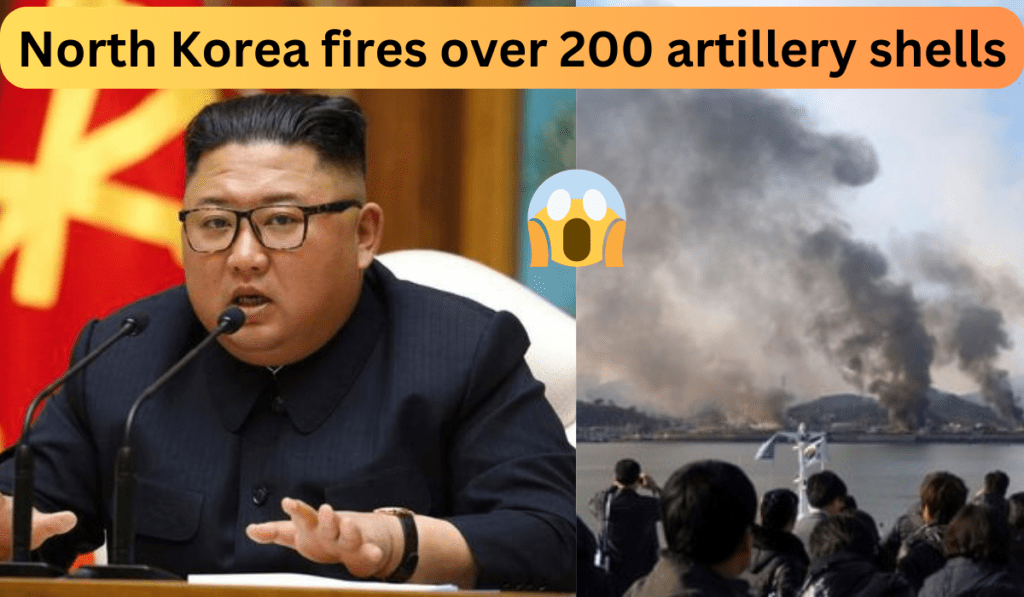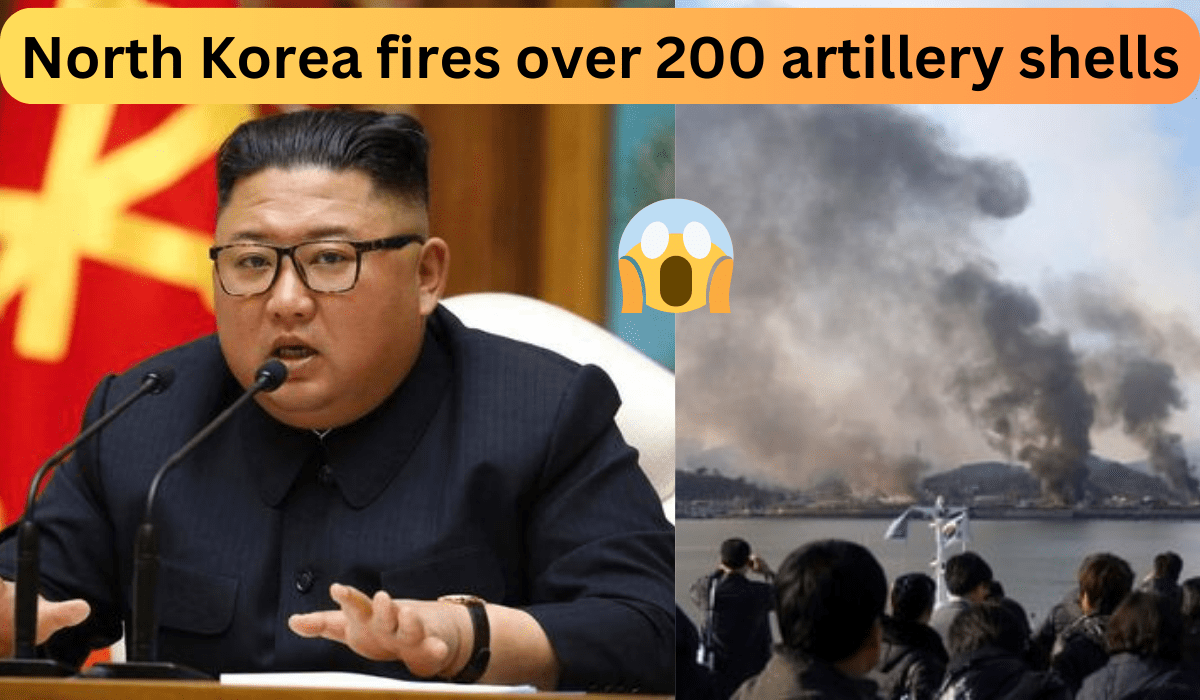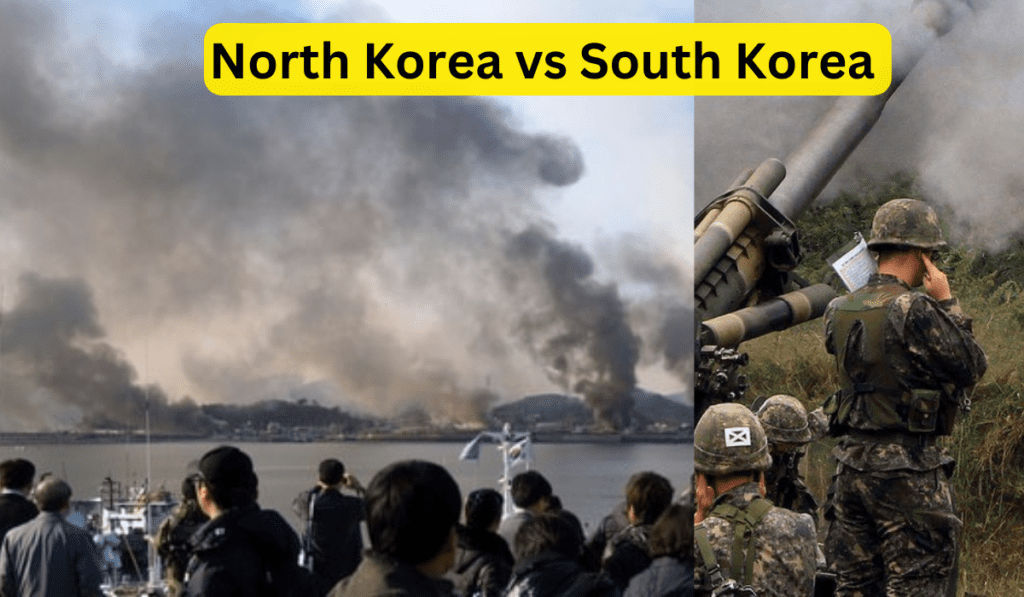- Homepage
- European countries
- Kim Jong Un As North Korea launches more than 200 artillery ballistic objects, South Korea urges evacuation.
Kim Jong Un As North Korea launches more than 200 artillery ballistic objects, South Korea urges evacuation.
In a startling turn of events on January 1st, North Korea unleashed over 200 artillery shells near two South Korean islands, intensifying tensions in the region. This provocative move followed repeated warnings from Kim Jong Un’s regime about its preparedness for conflict against South Korea and its ally, the United States.
Live Firing Incident Unfolds The North Korean military carried out this live firing incident from approximately 09:00 to 11:00 (1200 to 0200 GMT) in the areas of Jangsan-got in the northern part of Baengnyeong Island and the northern areas of Yeonpyeong Island. Civilians were promptly issued evacuation directives, described as a “preventive measure” according to Yeonpyeong local officials.
Strategic Geopolitical Significance Yeonpyeong Island, located in the Yellow Sea, holds strategic importance, situated about 80 kilometers west of Incheon and 12 kilometers south of the coastline of Hwanghae Province, North Korea. The island’s proximity to North Korea adds complexity to the geopolitical landscape.
Echoes of Past Tragedy The recent incident is a stark reminder of the artillery barrage in November 2010 when Pyongyang unleashed 170 shells on Yeonpyeong Island, resulting in four tragic deaths, including two civilians. This marked the first North Korean attack on a civilian area since the Korean War of 1950-53.
Deteriorating Inter-Korean Relations The current state of affairs between North and South Korea is marked by a noticeable downturn. Kim Jong Un has solidified North Korea’s nuclear status and conducted tests on advanced Intercontinental Ballistic Missiles (ICBMs). During year-end policy meetings in Pyongyang, Kim issued a warning of a potential nuclear strike on the South, advocating for a strengthened military arsenal in anticipation of a looming armed conflict.

Kim’s Accusations and Military Posturing Accusing the United States of presenting “various forms of military threat,” Kim directed his armed forces to maintain an “overwhelming war response capability.” A report from KCNA stated that the gathering in Pyongyang concluded with the belief that it is a “fait accompli that a war may break out on the Korean peninsula any time due to the enemies’ reckless moves for invading the DPRK.”
Global Responses and U.S. Actions In response to North Korea’s actions, the United States took measures to dissuade further escalation. A nuclear-powered submarine was deployed to the South Korean port city of Busan, and joint drills with long-range bombers were conducted alongside Seoul and Tokyo. However, North Korea denounced these actions as “intentional nuclear war provocative moves.”
North Korea’s Nuclear Ambitions Kim’s warnings coincide with North Korea achieving a successful launch of a reconnaissance satellite in 2023. South Korea alleges Russian assistance in exchange for arms transfers to Ukraine, adding another layer of complexity to the already tense situation.
Urgency and Preparations In a clear message, Kim emphasized the military’s need to “rapidly respond to any possible nuclear crisis” and to continuously prepare for a significant event, including the mobilization of all available means and forces, including nuclear forces, in contingency.
Conclusion
The recent artillery barrage by North Korea has not only heightened tensions in the region but also brought back memories of past tragedies. As the situation unfolds, global responses, particularly from the United States, play a crucial role in determining the future course of events on the Korean peninsula. The delicate geopolitical balance in the region remains on edge, and the international community watches closely for any signs of further escalation or diplomatic breakthroughs.






